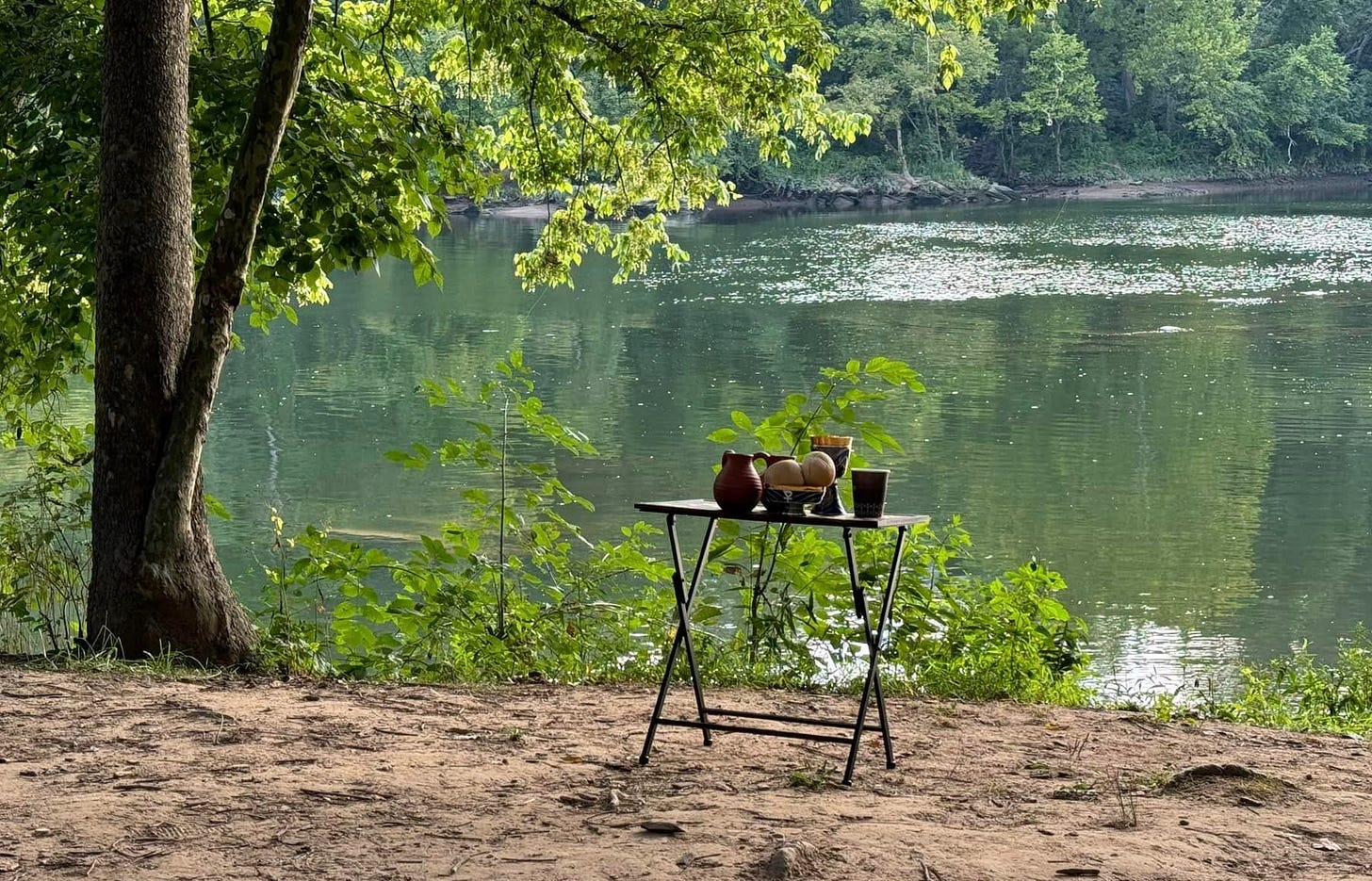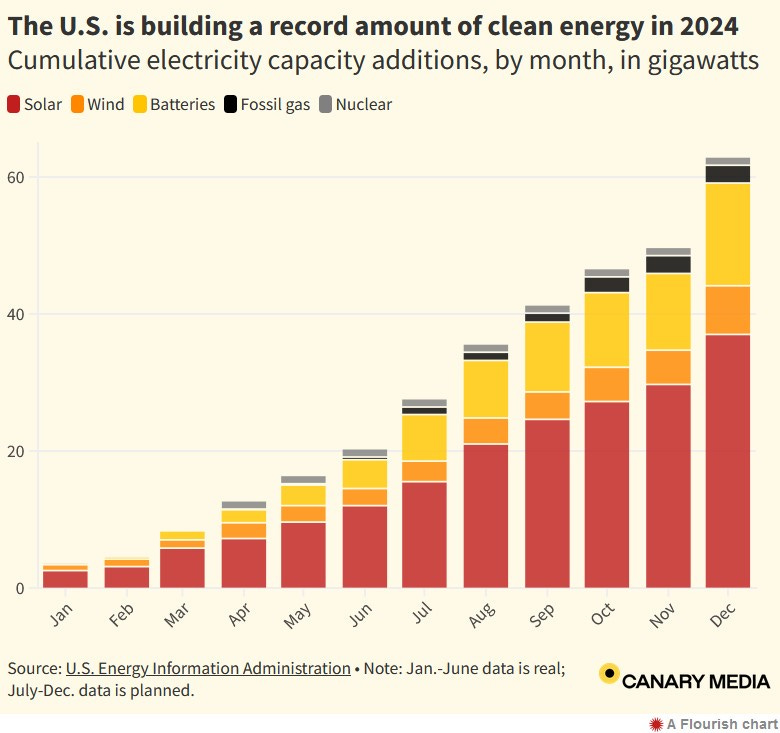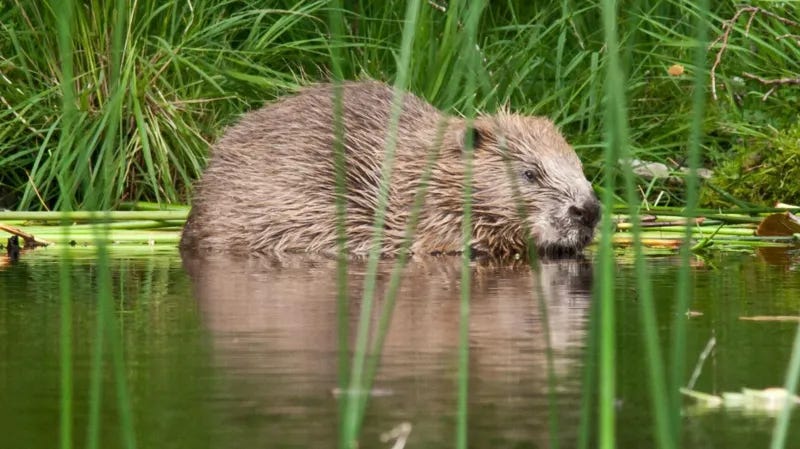Refugia Newsletter #76
A spiritual watershed, energy transition in the US, Klamath River restoration, ungulate migration, prairie potholes, and naughty beavers
Refugia News
In the last few weeks, my university, as always, welcomed back our returning students along with a new batch of brand new first-year students. Most of these young people were born around 2006, and they are from all over the world—20% of our incoming class are international students. I’ve been thinking about these dear young people and their global future. College undergraduates today could well live into the 2090s. Wow, that is a sobering thought. What will the world be like in the 2090s?? What changes and challenges will these young people face beyond our current knowing? Well, all the more reason to work hard now on the problems we do know about, striving for a just and sustainable future on this planet.
Besides getting my courses launched and appreciating the energy of young people, this week I enjoyed a great Zoom conversation about Refugia Faith with some folks from the Water and Wilderness Church, located in the Washington, D.C., area—well, sort of located. One of the things I love about this group is that they are experimenting with new ways of doing church. Father Pete Nunnally describes the group as a “spiritual watershed.” The “members” of the group are from various parishes and other faith communities in the area—or elsewhere. They share a belief “in the ethos that what's good for the Earth is good for the soul.” Here’s a short interview with Father Pete by Molly Johnson of Creation Justice Ministries.
I love the Eucharist table at the waterside. Photo from Sept. 15 worship with Water and Wilderness Church. Source: Facebook
Father Nunnally describes the group as a “complement” to more traditional worship and church membership. The Water-and-Wilderness folk worship in person, outdoors, once a month. And they put on retreats! Their “Sea & Soul” retreat is happening Oct. 11-14 at the Chincoteague Bay Field Station in Virginia. It sounds like an amazing opportunity—lots of hands-on science combined with spiritual reflection. (Wish I could go. I’ll have papers to grade, alas.)
Many thanks to these good folks for reading Refugia Faith together and for inviting me to have chat with them about the book and about their efforts to find new paths for faith communities in a climate-changed world.
This Week in Climate News
As promised, as a follow-on to my summary last time on clean energy in China, this week I’ll try to summarize how the clean energy transition is going in the US—with an accompanying shout-out to the Inflation Reduction Act, which had its two-year anniversary in August. Get ready for lot of statistics and data-viz.
We’ll start with the IRA. According to the White House Fact Sheet (which links to sources), implementation of the IRA is happening quickly and making a huge difference to a lot of people:
Clean energy projects are creating more than 330,000 jobs in nearly every state in the country, according to outside groups.
Companies have announced $265 billion in new clean energy investments in nearly every state in the nation. According to Treasury Department analysis, many of these investments are happening in underserved communities—since the IRA passed, 75% of private sector clean energy investments have occurred in counties with lower than median household incomes, and clean energy investment in energy communities has doubled.
Last week, Treasury and IRS released new data showing that in 2023, more than 3.4 million American families saved $8.4 billion from IRA consumer tax credits on home energy technologies.
Over 99% of high-poverty counties in the United States are benefitting from an Investing in America project funded by the Inflation Reduction Act, Bipartisan Infrastructure Law, or CHIPS and Science Act.
So what does this mean for transition overall? Well, the folks at Fix the News sum it up nicely:
Installations of wind, solar, and storage skyrocketed by 91% in Q2 [second quarter of 2024] (and there's another 73 GW under construction across 48 states); solar generation is doubling every three years; clean energy jobs are growing at double the overall rate of job growth; solar manufacturing capacity has nearly quadrupled in two years; and the government is spending $7.3 billion on the largest investment into rural electricity since the New Deal.
A Canary Media article by Dan McCarthy reports that 97% of new energy capacity built this year in the US was carbon free—59% solar, 21% battery, 12% wind, 5% nuclear. Not only have we built a lot so far, but there’s much more in the works, as this chart illustrates.
We’ve had a lot of wonky statistics so far, so let’s go right to another chart. This one is from Jeremy Symons’s data-crunchy analysis of job data from the Department of Energy.
Source: Climate Insider
So yeah, President Biden’s policies have created a ton of clean energy jobs; under the Trump administration, the US lost a bunch of clean energy jobs.
If you’re wondering how all this new clean energy manufacturing—a lot of it happening in red states—is affecting political attitudes in those states, well, that’s an interesting question, and it’s kind of too early to tell. But Dan Gearino of Inside Climate News gave it a try with this feature on an EV battery plant in Ohio. And David Roberts did an episode of the Volts podcast on a solar panel plant in Georgia.
Also, if you’ve heard rumors about how EV sales have “slumped” in the US or something, that’s not quite the story. Another article by Dan Gearino analyzes the situation more deeply. He begins with a more precise statement: “Sales of new EVs are growing but at a slower pace than they did last year.” However, that pace is set to accelerate again soon. The big leaps in growth are coming, as shown here using data from BloombergNEF.
Deeper Dive
That was a lot of numbers and graphs and charts! Just a little more! We need to add a global perspective now. Michael Thomas of Distilled did some data analysis on the bigger question. We’re building a lot of clean energy infrastructure. Great. But are we actually burning less fossil fuel to make power? And are we actually reducing emissions? The answer in the US: yes. Fossil fuel power generation peaked in 2007. Indeed, this has actually made a difference in emissions.
What about the whole world, though? Well, global electricity generation is slowly getting cleaner, but demand is also getting much larger. That’s good in the sense that more people are getting access to electricity. Can we build out renewables not only to replace fossil fuels but to keep up with demand—in a just way? That is the challenge.
Here is some good news on that question. Thomas refers to a recent analysis from Ember:
Now the climate modeling experts at Ember Climate anticipate that 2024 will be the year that fossil fuel power generation finally falls. In other words, we’ve probably already reached peak emissions in the global power sector. We’re turning the corner.
And just-released reports from BloombergNEF yield these summary points:
More than 40% of the world’s electricity came from zero-carbon sources for the first time in 2023; 14% from wind and solar
Almost 91% of global net power capacity additions came from solar and wind in 2023 versus 6% from fossil fuels
Renewable energy attracted $313 billion of new investment in the first half of 2024, similar to the same period in the prior year
Renewable power output rose more than 5% year-on-year, to make up nearly a third of global generation in 2023.
As always: more needed, and faster. And in more than the power sector. But we’re moving in the right direction overall.
Refugia Sightings
Enough with the charts and graphs. Time for nature stuff now! Every week, my inbox is stuffed with stories about conservation and restoration work, about threatened species making comebacks, about people using love and ingenuity to create and strengthen refugia. Let’s do four quick stories.
In Northern California, the Klamath River is running freely after four major dams were removed. This is a fascinating story featuring Indigenous leadership, a lot of partnerships, and a lot of patience. The dams had been causing toxic algae blooms and massive salmon die-offs. Through decades of activism and negotiation, eventually agreements were in place to remove the dams. According to an article by Lucy Sherriff for BBCNews,
In 2022, the go-ahead was finally given to remove the dams, 12 years after the original agreement to pave the way for the project was signed in 2010. Oregon and California agreed to shoulder joint liability and in October 2023, the first dam came down.
Now, Yurok leaders are overseeing a huge land restoration project for all the land now exposed. Among other things, this project involves planting 18 billion seeds from carefully selected plant species.
The Klamath River. Image credit: Lucy Sherriff.
Another example of restoration-for-refugia: prairie potholes. The “Prairie Pothole Region” covers 770,000 square kilometers in the US and Canada. This region used to be covered with small wetlands—prairie potholes—that farmers drained in order to farm edge-to-edge. Draining the potholes actually ended up making it harder to manage water on the land—not to mention destroying habitat for wetland creatures. Having figured this out, nonprofits, governments, and farmers are now working together to restore these potholes. Jennifer Cole, in her article for reasons to be cheerful, explains:
Serving as natural sponges, [the wetland basins] not only hold in water from snowmelt and rain events but have incredible flood storage capacity, which helps keep water from running off the land. Instead, it seeps through the layers of silt and sediment lining the basin, recharging the underground wells and aquifers many prairie farmers rely on.
Hannotte wetland in Saskatchewan. Source: Ducks Unlimited Canada.
Next up: migration corridors. The Atlas of Ungulate Migration “serves as a repository for up-to-date migration maps that can inform conservation planning, infrastructure development and policy making.” Besides having the coolest name ever, this resource is interactive! Go ahead and play around with it to arrive at maps like this one, which shows migration corridors for mule deer in western Wyoming.
Source: Atlas of Ungulate Migration
I wondered if there was something similar for birds, and I found the Eurasian African Bird Migration Atlas. Also cool. This one serves a similar purpose: helping with conservation efforts. And thrilling birders!
Finally, I take it as my solemn duty to keep you up to date on beavers. Here’s the big news: the UK is experiencing a baby beaver boom. Beavers are native to the UK, but were extirpated about 400 years ago. They’ve been slowly coming back, having been welcomed again as “ecosystem engineers” to restore river habitats. However, the government has been rather pokey about allowing official releases: among other things, authorized releases require a 100,000 word application!
Obviously, it’s a good idea to plan these releases carefully, but conservationists have complained about the red tape and foot-dragging. This year’s baby boom—technically it’s a kit boom—is raising pressure on the government. Where are these beaver babies going to live when they grow up? Meanwhile, “beaver bombers” have been at work engaging in surreptitious, unofficial beaver releasing, compelling reporters to write amusing sentences such as: “There are thought to be hundreds of wild beavers living ‘illegally’ in English rivers and more than 1,000 in Scotland.” Those naughty beavers!
Image credit: Scottish Wildlife Trust, Steve Gardner
Media Corner
I’m always on the lookout for short videos about climate change in order to provide reliable information to students—and other curious people. This one, by data scientist Hannah Ritchie, offers a useful big picture on climate solutions. It’s a great one for people who wonder if it’s all hopeless, if there’s no point in working to mitigate climate change. Ritchie, the author of Not the End of the World, describes herself as an “urgent optimist.” She acknowledges the enormity of the task, but uses real data to encourage us all about possibility and progress.
Lots of hopeful news this time. Thanks for reading. Until next time, be well.
As usual, bold type in quotations is added unless otherwise indicated.













What an encouraging newsletter, Deb! Thanks for pulling all this info together - we need to hear more in particular about clean energy progress from our national media.
https://www.instagram.com/tv/CnAnDaUozjz/?igsh=MTBlZjE4YzMxOA==
Here’s another great student friendly video and up and coming program